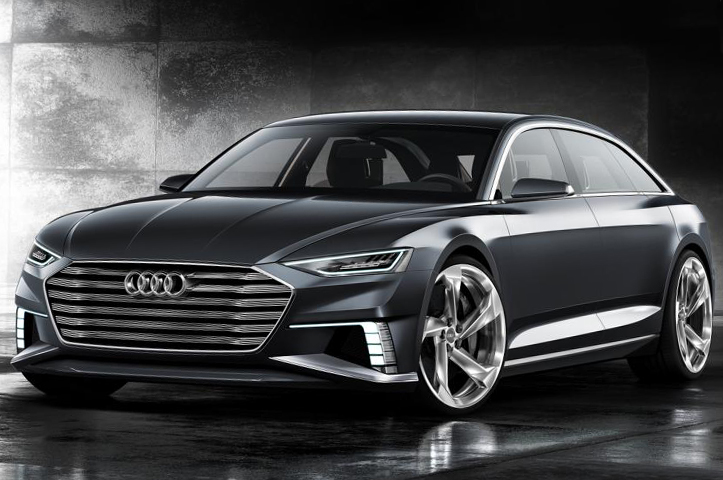
Audi has revealed its diesel-electric Avant concept ahead of Geneva Motor Show, starting next month. It is a concept successor to the prologue Coupe which was first seen at the last year’s Los Angeles Motor Show. This time it has been created to update the Audi lovers on how its design language will be, and how new models like the A6 Avant will use this technology.
New concept has a hexagonal grille, angular matrix laser headlights and LED graphics. It also has a contoured bonnet and shapely front wings. However at the front doors, it receives trailing edges and a set of rear doors to make it a saloon version. The arches on the rear wheels are looking very muscular. It has a longer roof, more upright pillars and a steeply angled
New concept has a hexagonal grille, angular matrix laser headlights and LED graphics. It also has a contoured bonnet and shapely front wings. However at the front doors, it receives trailing edges and a set of rear doors to make it a saloon version. The arches on the rear wheels are looking very muscular. It has a longer roof, more upright pillars and a steeply angled tailgate, while the exhaust pipe is integrated into the bumper.
All new Avant concept has a length of 5110mm, with the width of 1970mm and a very ideal height of 1400mm. These figures are relatively big than of a Coupe, the length of the vehicle makes it bit longer, height and width are also larger than the prologue Coupe. Like its coupe sibling, new saloon has a 2990mm wheelbase and 22-inch wheels.
It has a relatively modern central console with touch controls to preview the Audi’s futuristic interiors. The powerhouse of the prologue Avant has a diesel-electric Hybrid unit which is also nominated for the second generation Q7, due at the end of this year. the prologue Avant has twin-turbocharged 3.0 litre V6 Audi diesel engine with the electric motor.
This combination collectively produces the power of 449 horses. It clocks 62mph in just 5 seconds and offers a blasting fuel economy of 176.5 miles per gallon. It is equally environment friendly system with carbon emissions of only 43g/km.